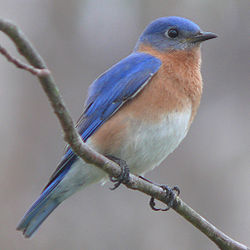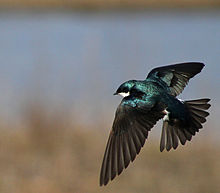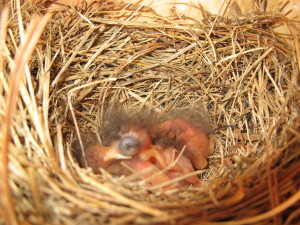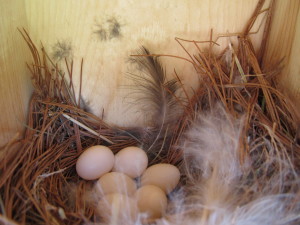
Eastern Bluebird
The winter months in Pennsylvania can bring a joy to us all. There are the snow covered mountains, icicles dangling from tree branches and icebergs floating down the rivers. For some, a few months of this is more than enough and your mind begins to have “warmer” thoughts. As the winter thaw has begun and spring is here to celebrate, you might consider the blue in your backyard, bluebirds!
The eastern bluebird is native to Pennsylvania but has the challenge of surviving among some non-native species. This is where you can get involved and have the joy of watching these birds thrive in your own backyard.
The introductions of house sparrows and starlings in 1851 and 1890 were the primary reason for the bluebirds’ decline, as these non-native species took over native bluebird nesting cavities. The nesting cavities is where your efforts can be put into action.
Bluebird boxes are readily available from countless sources. The Pennsylvania Game Commission sells boxes as well as kits each year and are available at their headquarters at 2001 Elmerton Avenue in Harrisburg. The kits can be a fun project to do with family and friends. If you have the proper supplies lying around your home, you can create your own version of the bluebird box. Be sure to use proper specs when constructing the box to ensure it is ultimately used by your targeted species.
Creating a home is just the beginning in properly managing the bluebirds. The boxes need your constant attention to be sure you are doing more good than harm. Monitoring the boxes regularly is a must. You can increase the success of your boxes by taking proper care of each one. Having your friends and family help you makes the experience even more fun and exciting. Monitoring the boxes will not cause the birds to abandon the nest.

Tree Swallow
Different species will be interested in the new cavity that you have created. The tree swallow is one that will utilize the box and it should be cared for as well, if you encounter them. It is recommended that the boxes be as far as 300 feet apart. The bluebirds can and will chase away the tree swallow if they desire the same box. The tree swallow is a smaller bird with a shiny, iridescent blue upper body and head.
Predators should also be considered when creating a home for the bluebird. This includes snakes, raccoons, cats and even insects. If the boxes are not cleaned properly after each successful nest is complete, the insects will be attracted, possibly deterring the birds from nesting again. Also, a small amount of grease around the pole will deter insects from reaching the box. In a single season, the bluebird can produce up to four broods. The bluebirds keep their nest clean by removing fecal sacs left by the baby birds. In order to deter the predators from snatching baby bluebirds and eggs from the nest, the entrance to the box should be at 5 feet above the ground. Using a half inch piece of conduit is a perfect pole for the box to be attached. This is a difficult pole for predators to climb as they cannot use their claws to grip it. However, this does not keep the snakes out. The snakes have the ability to spin their way up the pole. A predator guard can be made with a stovepipe and cap. The guard should wobble on the pole as this makes it more difficult for predators to get past it.
The Bluebird Society of Pennsylvania is interested in the details of your bluebird homes and successes and, they have an abundance of information to help you create the best possible homes for your backyard.



